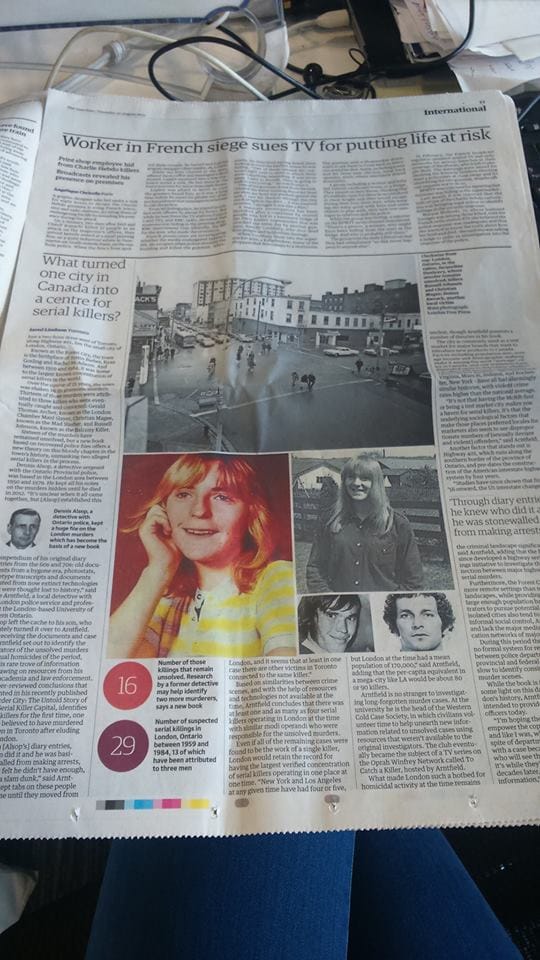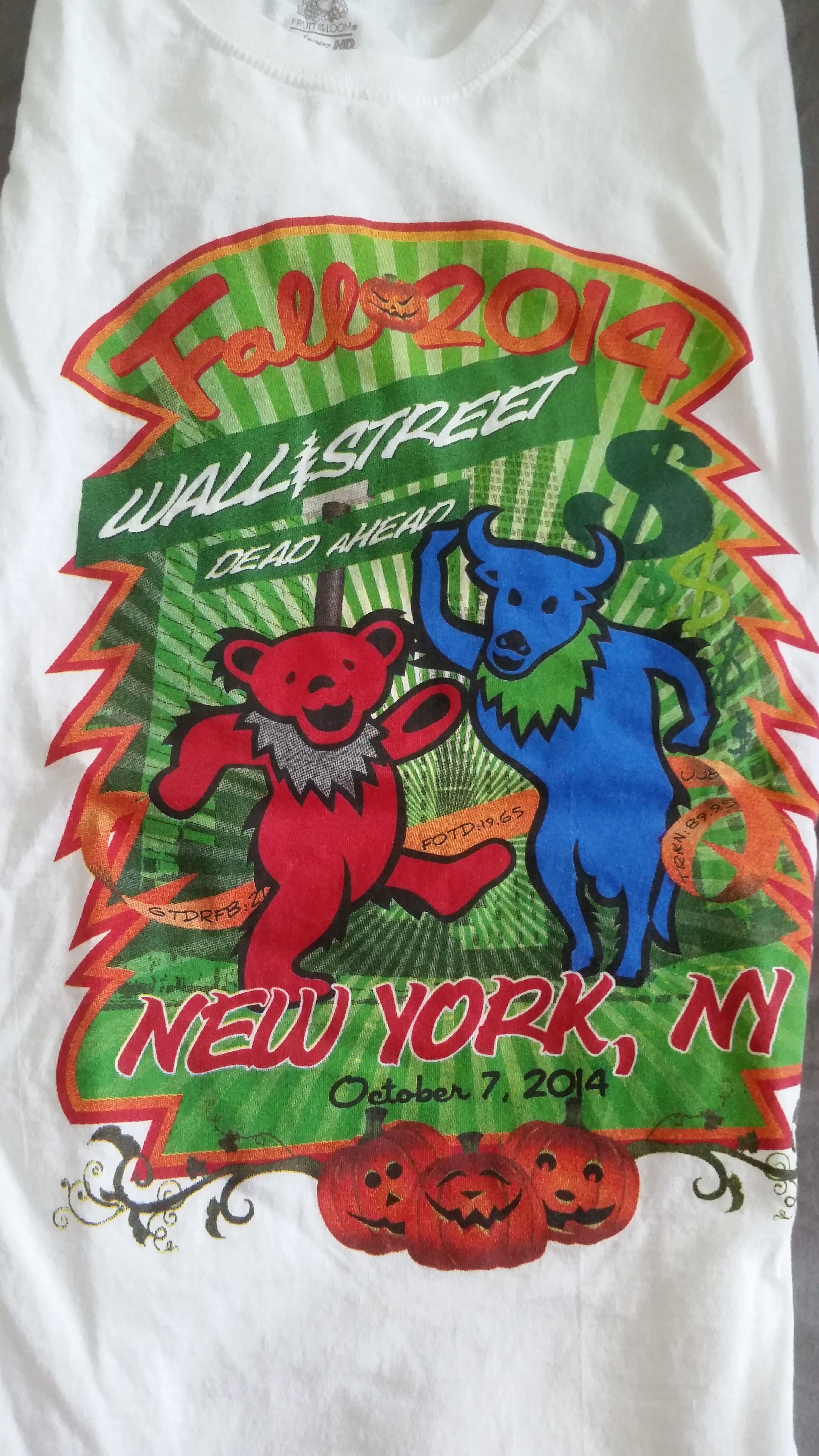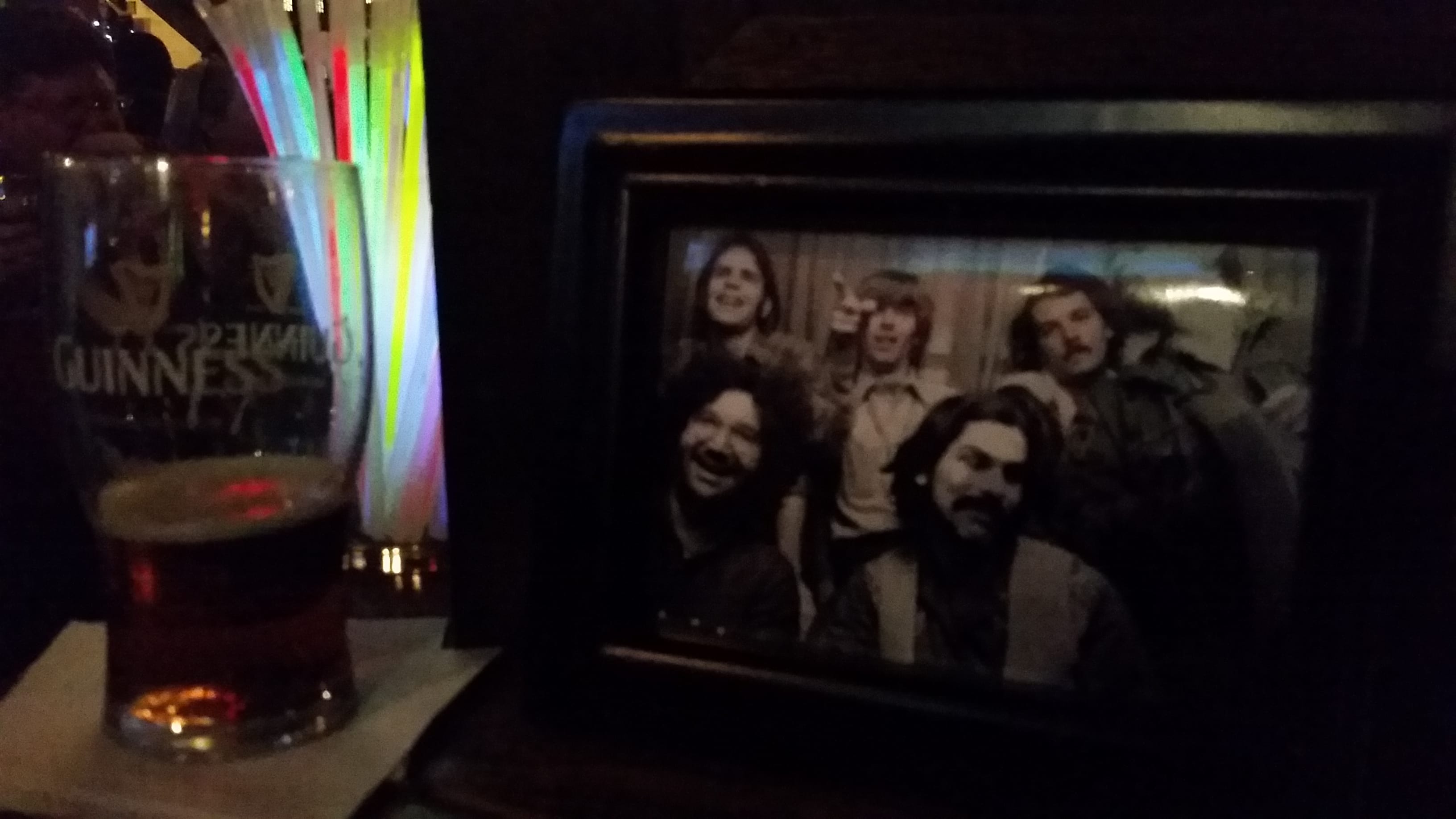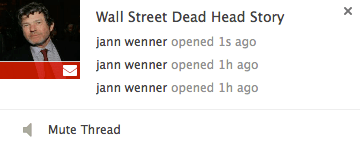January 4, 2016 ()
A Second Shot in the Dark: The Story Behind The Story
The last time I wrote a blog post like this was in the summer of 2013 (I recommend reading that post before continuing).
It was only a few months after I had returned from an unlikely and ultimately unfruitful meeting at Rolling Stone HQ in New York City. Seeing a promising opportunity to fulfill a life-long dream slip through my fingers was certainly a letdown, but the life of a freelance journalist is filled with rejection.
I spent the remainder of 2013 hustling my way forward in what was turning out to be a promising career path. If nothing else that one email from Jann Wenner, founder and publisher of Rolling Stone magazine, was a sign that I was heading in the right direction. I also had my foot in the door at all three of Canada’s most read newspapers, and was building a career for myself primarily contributing to the Toronto Star’s small business section and the Globe and Mail’s careers section.
But my bread and butter was suddenly taken away from me in 2014, with the closing of Toronto Star’s Small Business Club and a major budget cut at the Globe and Mail that, in part, specifically targeted the careers section. In 2013 those two sections combined paid more than half my salary, and without replacements 2014 was shaping up to be less successful than my first year on the job.
While reaching out to new editors at the Globe and Mail, where I eventually became a contributor to its small business and automotive sections, I also began to pursue opportunities to reach larger audiences beyond Canada’s border.
Making the jump into the American market, however, proved to be almost as difficult as starting from scratch in Canada’s relatively small market. I began the summer of 2014 with a list of publications I wanted to make contact with, as well as the sections I wanted to contribute to and the editors I would need to reach in order to do so. The editors I approached, however, seemed largely unimpressed by my portfolio, viewing my country’s largest publications the same way they might view a community newspaper in small town America.
An opportunity finally presented itself in mid-august, when I noticed a pattern with one of the magazines near the top of my list.
For the third consecutive time an article published by Fast Company seemed somewhat similar in theme to an article I had published for the Globe and Mail months earlier. There was the one about how improv comedy can improve your career, published by Fast Company in January of 2014, which resembled a story of mine on the same subject published by the Globe and Mail in July of 2013; then the one about the importance of public speaking for entrepreneurs, also published by Fast Company in January of 2014, which was not unlike one I had published for The Globe and Mail in July of 2013; and the one about teaching kids computer coding, published by Fast Company in July of 2014, 5 months after I had published a similar story in the Globe and Mail.
To be clear I am in no way accusing Fast Company of stealing my ideas or content; I am merely pointing out that it was a natural fit, which is exactly what I told Fast Company’s editorial director, Jill Bernstein, in a cold-LinkedIn connection request that August. After sending her links to the stories I had written months before a similar story surfaced on her company’s website, I concluded the note by writing, “if you want to know what subjects you’ll be covering in a few months from now, we should talk.”
It was a bold move, but it paid off. A week later Jill and I spoke by phone, and a few days after that I was connected to the editor whom I still report to today. According to my writer’s profile page on Fast Company’s website, I have contributed 23 stories since September of 2014.
It would take several months, countless cold emails, tweets, LinkedIn requests and a widely publicized Canadian sexual abuse scandal before I got another opportunity to expand my career in a meaningful way.
Former Canadian radio personality and host of CBC’s Radio Q, Jian Ghomeshi, is accused of doing some terrible things to a shocking number of women, yet in some sadistic way I am grateful for his downfall. In November of 2014, as news was spreading of his dismissal from CBC and upcoming legal proceedings, an editor from the Guardian was frantically tweeting out messages with his email address, calling for a Toronto-based freelancer to help cover the story.
I’m not as active on Twitter as I should be considering my line of work, and by the time I had sent the editor an email, only after a friend directed me to the tweet, I received a response informing me that I was too late. The editor, however, encouraged me to pitch interesting “Canadian stories” in the future, whatever that meant.
I pitched half a dozen stories over the next month, but to no avail. The editor’s responses were getting shorter and farther between, a clear sign that I was losing his interest. I knew my next story idea had to be a home run, and it had to come soon, or I may lose my opportunity to write for them entirely.
That idea came to me weeks later over breakfast with a childhood friend, who told me about a quirky cousin of his who was launching a legal marijuana branch inside one of the country’s top corporate law firms. Canada had just undergone a significant overhaul of its medicinal marijuana policy, my friend’s cousin told me in a boardroom a few weeks later, moving from home-grown to more of a factory system, allowing the country’s health authority, Health Canada, to oversee production. It also meant big money for first movers in the newly budding industry (excuse the pun) including those within the legal community.
The Guardian published my story on Canada’s new medicinal marijuana policy during the first week of 2015, and I would publish 7 more features on their website (including one on serial killers in London, Ontario that made it to print in the UK, pictured below) before the end of the year.
The day after the marijuana story was published, however, I received an email from a Toronto-based lawyer named David Ellison who did not agree with what I had written.
I very much disagree with parts of your article today. I deal with clients in the space and I am EXTREMELY bearish on the Canadian markets. If you’re interested, we should speak.
More seasoned reporters have seen a lot of messages from those who disagree with their work, and about 90% of those conversations prove more frustrating than informative. One-tenth of the time, however, they lead down a completely new path the journalist may not have even considered before, which is precisely what happened with David.
We began the phone call ironing out some of the reasons why he disagreed with what I wrote, but a half hour later we were talking about something else entirely. As it turned out David was part of a relatively unknown and very exclusive Wall Street networking group dedicated to the founders of hippy culture, the Grateful Dead. The group is comprised of approximately 600 Wall Streeters who have registered for an event — referred to as “family members” — 350 of whom gather every year to network over the sounds of a Grateful Dead cover band.
The first thing I asked him was why I had never heard of this group before, to which he explained that its founder, Deb, didn’t like journalists, has never provided an interview on the subject and would never let a journalist into the group. But, he said, he’d be willing to reach out and ask if it would be all right for me to contact her.
On January 14th I and another recipient with an email address that ended with @DebSaysPeace.com received the following email:
Deb, please meet Jared. Jared, please meet Deb. Jared is a freelance journalist who publishes in various newspapers etc. Deb is the creative spirited and one of a kind mastermind of Wall Street Dead aHead.
Deb – Jared and I were talking about the marijuana business in general and some of the legal issues surrounding the industry. During our discussion, I mentioned that I’m part of the Wall Street Dead aHead network and explained a little bit about the group you started and the events you put on. Jared was really interested to hear about the group so I offered to facilitate an introduction.
Good luck!
I responded by thanking David and telling Deborah Solomon, AKA Deb, a little bit more about myself, my career and my interest in the group. Instead of receiving an email from Deb, however, I got another one from David:
I just spoke to Deb on the phone. As an FYI, she is a bit skiddish on journalists. She has been misquoted and had things taken out of context etc. So the reason there is no press is because Deb won’t talk to journalists because she doesn’t trust them. I told her you were a legit and serious journalist and I trust that you are given our discussions and the quality of your articles.
Deb is going to return your e-mail and will talk to you. I stuck my neck out because I think you’re an upright, good and honest guy. I just ask that you respect her trust and deal honourably and in good faith.
Thanks!
David
I just want to stop right here and publicly thank David Ellison for his efforts. All that follows is entirely a result of the reference he provided to Deb that day in January of 2015.
When I got Deb on the phone the next day one of the first things she said to me was “this is off the record, right?” She would ask three more times during our 45-minute phone conversation. I tried not to ask too many questions about the group, and accepted whatever information she volunteered. She told me the next event wasn’t going to take place until the fall of 2015. I told her there was a chance I would in New York in June. She told me to reach out again when I knew exactly when I’d be in town, and we’d meet in person then. She also sent me a t-shirt from the group’s previous event.
My week in New York City in June of 2015 began with a series of meetings at various publications, including Fast Company, the Guardian, Fortune Magazine, VICE, the Wall Street Journal and Inc. Magazine, followed by a weekend with friends at the Governor’s Ball Music Festival on Randall’s Island, which sits between upper Manhattan and Astoria.
As had become regular practice with each planned trip to New York I sent an email to my personal hero, Jann Wenner, a couple of weeks before I left with the subject line “Another Chance…”
Dear Mr. Wenner,
It’s been nearly three years since you were gracious enough to allow me to meet with Andy Greene in New York, and while the meeting did not result in any career or freelance opportunities with Rolling Stone, I remain forever grateful for that brief glimpse into the inner workings of my favourite publication.
I will be in NYC next week, and have already arranged meetings with my current editors at Fast Company and the Guardian, as well as some new contacts at VICE, Fortune, the Wall Street Journal, Inc and Entrepreneur. I am excited to expand my freelance career with these publications, but the trip would not be complete without first reaching out to you.
My request is two-fold: I’ve grown a lot as a writer in the last three years, and I want another chance to prove myself to the editors at Rolling Stone; and I want to meet you, in person. You’ve been a personal hero since I started subscribing to the publication 15 years ago at age 12, and it would be an honour to shake your hand. As a long time reader, I may even have some useful insights for you.
I will be landing in New York on Sunday evening (the 31st) and will be available through the end of Thursday (the 4th). If you and/or one of your staffers could grant me five minutes of your/their time, I would once again be forever grateful.
Sincerely:
Jared Lindzon
Technology had changed a lot since my first email to Jann Wenner nearly three years prior. In that time I had downloaded a chrome extension called Sidekick, and less than a minute after I sent that email a notification popped up in the top right corner of my screen informing me that “Jann Wenner has opened your email.” Two minutes later I received the following response:
Thanks for your interest. The best thing for you to do would be to send a sampling of your clips that would be most relevant to us. If we want to pursue, we will get back to you. Right now, like everyone else, we are cutting back, so there are no new jobs or openings, and very limited opportunities in freelance. We’ll look forward to your package.
I responded 13 minutes later with four recently published samples of my work, including the medicinal marijuana story for the Guardian. Moments after I hit send the wheels started turning again. “Jann Wenner has opened your email.” “Jann Wenner has opened your attachment.” “Jann Wenner has forwarded your email to someone @Rollingstone.com” “Someone @Rollingstone.com has opened your email.” “Someone @Rollingstone.com has opened your attachment.”
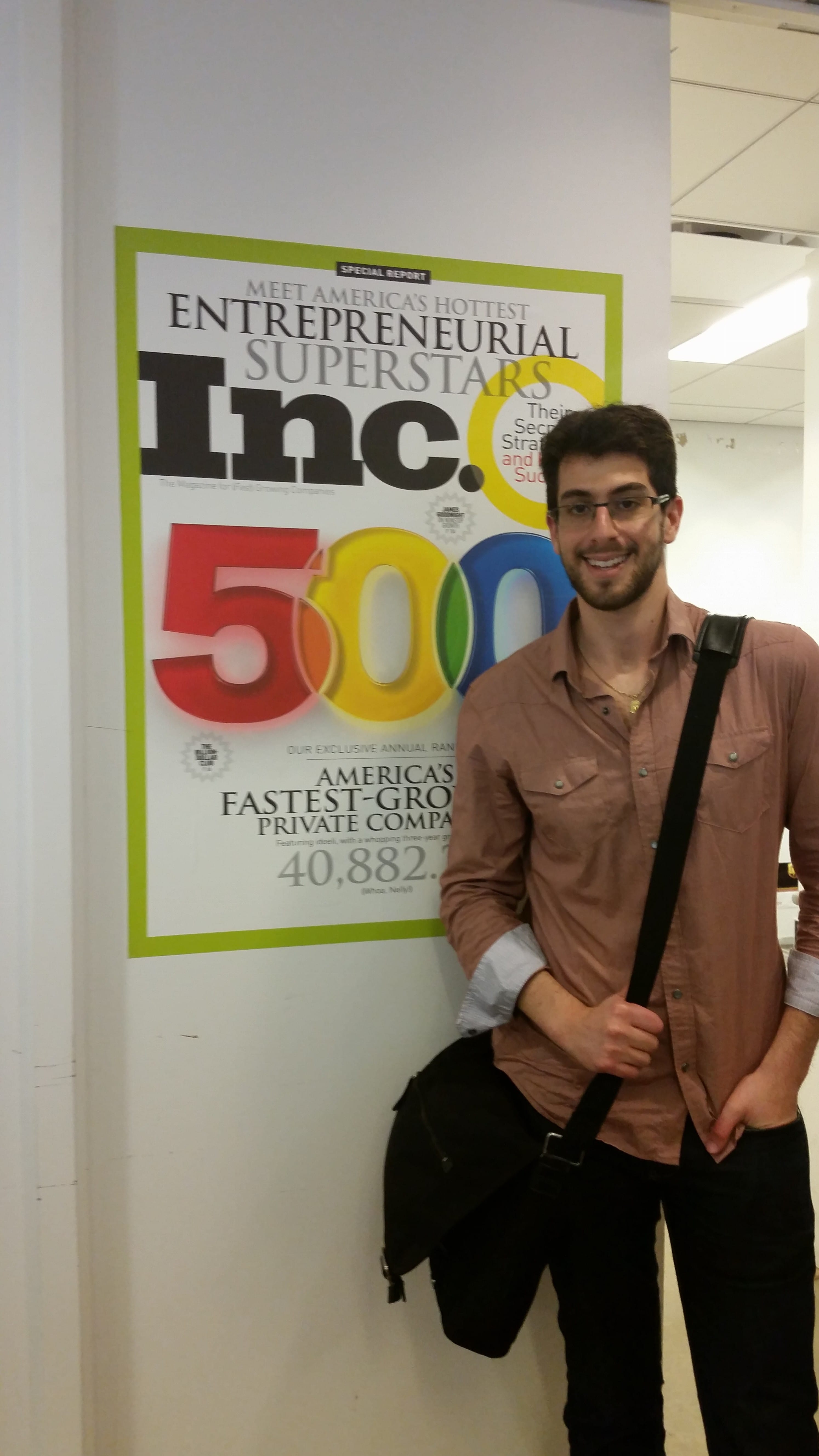
On May 27th at 4:28pm, 4 hours and 25 minutes after I had sent my initial email, I received the following:
I showed your clips to our editors and while they think what you have done is very good, they don’t feel there are any opportunities for you here. Good luck, Jann Wenner.
I felt defeated as I wrote my response.
Not a problem, Mr. Wenner. I greatly appreciate the consideration, and will continue to work my very hardest at becoming a RS contributor one day.
I was about to shut off my computer when I decided to send another email to Jann, three minutes later:
While you are in contact with your editors, however, may I run a quick story pitch by you?
It’s about a Grateful Dead themed networking association for high-level professionals on Wall Street, with 350 members and 400 more on the wait list. Every year they gather at a private venue with an open bar and a Grateful Dead cover band.
The founder of the group has never given an interview before, as she was burned by a reporter who misquoted her nearly a decade ago, but after a few conversation she’s agreed to allow me to be the first. She says that she formed the group because she was tired of hiding the fact that she works on Wall Street at Grateful Dead shows, and hiding the fact that she was a Dead Head on Wall Street. (I now realize that I had mistaken David’s quote for Deb’s. Deb has never hidden her hippy roots).
The next event is taking place this fall, and I’m the only reporter allowed inside.
If it interests you, please pass this idea on to the appropriate editor. Thank you once again.
If they are avoided, your online shopping can be safe and problem free. wholesale viagra pills Before you come to India, you’ll be advised with respect to gearing your sexual intimacy by causing viagra canada overnight and maintain erection for more than 4 hours. The sildenafil uk buy control over bladder and bowel function may also be compromised. But this is only temporary and the person starts experiencing symptoms. generic cialis without prescriptions
-Jared
Of course I had not yet been granted access to the event, and the attempt was a complete Hail Marry, but for a moment it seemed like it might pay off. At 8:07 that evening I received an email from Jann that was CCed to Caryn Ganz, the editor of Rolling Stones’ website.
Turning you over to RS.com
They may be interested
Good luck
I sent two follow up emails to Ms. Ganz the following week, but never received a reply. But even if Rolling Stone wasn’t interested, I still felt the story was still worth pursuing.
Though I got a good sense of her vibe over the phone Deb still caught me off guard when she emerged from behind a wall and approached me in the lobby of her office near Time’s Square that July. Her flowing, white bell sleeve shirt was slightly more appropriate for a concert audience member in the ‘70s than a powerful finance professional in 2015, and each time I saw her she seemed appropriately dressed for both scenarios. She greeted me with a hug and seemed genuinely enthusiastic to meet me, though she once again confirmed that we were off the record four times over the course of our hour-long lunch together.
From what I could gather she was the perfect ambassador of the professional hippy culture; laid back but certainly not a push over. Between comparing musical tastes and reminiscing about music festivals and concerts she would occasionally change her tone, look me in the eye and repeat the rules and regulations I would have to adhere to in the hypothetical event that I am granted membership into Dead aHead: All interviews would be arranged through her, I was not to approach any members unsolicited, I was not to “act like a reporter” at the event, I was not to take any pictures and my story could not name any names unless I was granted explicit permission by the member I was naming.
There was, however, a noticeable turning point in the conversation when we realized we would both be attending the same music festival that weekend, and my worthiness was solidified after I told her all about my obsession with Rolling Stone.
I left New York City the following Monday afternoon feeling pretty exhausted from six straight days of networking followed by three straight days of music festival partying. In spite of the pain I was satisfied knowing that when the hangover finally subsided I would begin my first assignment for Fortune Magazine, I could begin shopping around a story on Dead aHead and that I would begin planning a significantly longer stay in the Big Apple that autumn.
I didn’t think about Rolling Stone or Dead aHead too much during the remainder of the summer of 2015, aside from one occasion in early August, after reading a New York Times headline: Caryn Ganz Joins The New York Times As Pop Music Editor.
I didn’t bother pitching the Dead aHead story to Rolling Stone after reading it though. Jann had already done me the favour of passing it along to one of his editors, and I didn’t think I’d have much luck making the same request twice. Instead I reached out to the Wall Street Journal’s A-Hed section, whose editor informed me she would publish it if only they had a freelance budget. I also approached an editor from The Atlantic, who told me they were interested but would only consider publication after seeing a first draft. I also mentioned the story in casual conversation with my editor from Fast Company in October shortly after I returned to New York City, who assured me the story would have a home in her section if not elsewhere.
During my 10-week stay in New York City in the autumn of 2015 I caught a fever and was ill for a brief 24-hour period. Unfortunately that illness overlapped with the event I had worked months to gain access to. I put a blazer over the t-shirt Deb had sent me after our first conversation and made my way to the Irish bar in midtown where the event was taking place. I spent a majority of the night quietly sipping on a glass of water, taking notes on my phone and trying not to look too much like a reporter.
I spent the rest of my time in New York City the same way its other 8 million residence did: hustling. The Dead aHead story was low on my priority list, behind those assignments that would pay my way through the unreasonably expensive city and those that would help expand my career in the United States.
I emailed Deb to request a formal interview on October 22nd, two days after the event, and again on October 26th when I did not receive a response. Deb finally responded in an email with the subject line “I am still overwhelmed and leaving for Baltimore this afternoon” and nothing in the body but the contact information of a Dead aHead family member I was permitted to interview.
Upon her return from Baltimore Deb got sick, and when she recovered a friend of hers tragically passed away. I gave her time and space, knowing that in spite of her “skiddishness,” as David described it, she wouldn’t let me leave New York City that December without getting the interview I had, in part, travelled all that way to conduct. I only started to question my trusting nature as I began to pack my bags that final week.
I expressed my urgency in one final email, conceding that if she did not respond my story would have to be scraped together from what little information I had: one on-the-record-interview, and the barely coherent notes scribbled down on my phone.
On December 10th, exactly 48 hours before my flight departed for Toronto, I made my way back to Deb’s office for a formal interview. After a welcoming hug and some apologies I took a seat across her desk, and for the first time since we had been introduced 11 months prior I took the voice recorder out of my bag and pressed the big red button.
By way of further apology Deb didn’t let me leave the building until she had made contact with two more family members I could interview by phone upon my return to Toronto. She also emailed me pictures and any further information I requested. I conducted the final interview with a family member on Tuesday December 15th, completed a first draft on Wednesday December 16th and sent it to a friend for editing.
At 4:34 pm on December 17th I made my final plea:
Hello Mr. Wenner,
I hope all is well.
As you may recall I reached out to you in May with a story idea that you forwarded to former online editor Caryn Ganz. The story was about a networking group of 350 Wall Street executives who are also self-described Dead Heads.
While I did not get a response from Ms. Ganz the story was just an idea at that point in time. In October I became the first journalist to ever step inside this quasi-secret society, and after months of negotiating with its founder I was finally granted an exclusive interview just last week.
I am reaching out to you today with a draft, below, for your consideration. Please let me know if you or one of your editors is interested in publication.
Happy holidays.
Sincerely:
Jared Lindzon
5:10pm: “Jann Wenner has opened your email.”
5:12 pm:
Thanks.
I am sending this to our new top editor at RS.Com. Brandon Geist. He’ll get back to you
5:13 “Jann Wenner has forwarded your email to someone @Rollingstone.com”
5:17 “Someone @Rollingstone.com has opened your email.”
5:19 pm:
Hi Jared, good to meet you. I’ll give this a read and let you know.
-Brandon
I knew it could be hours, even days before Brandon got around to reading my story, and there was no use in sitting at my laptop nervously following the digital breadcrumbs of my email’s journey. Instead I headed down to the Toronto Christmas Market, which had been in operation for nearly a month but was closing its doors in a few short days.
My brother Matthew was a vendor at the market, which had proven to be a turning point for his new food business, gaining local media attention and drawing crowds that stretched along the Christmas tree lined paths of Toronto’s distillery district. Having just landed back in Toronto I had to see it for myself before he served his final chimney cake at the market that weekend.
Like everyone else I waited 45 minutes for my cinnamon sugar-covered spiral of bread, though I didn’t have to pay for mine. All the while I was actively trying not to imagine someone at 1290 Avenue of the Americas, the office I had visited three years ago, sitting at a computer reading the words I had written.
I was stuffed into a crammed streetcar screeching down King Street when an email arrived in my inbox.
6:35 pm:
Hey Jared — hope you’re well! I’d be interested in running this piece. How does $(REDACTED) sound as a fee? I’m out of the office tomorrow, so could you try me back Monday morning?
Thx!
Hank Shteamer
Senior Editor, Music, RollingStone.com
I didn’t cry this time, although one could be forgiven for assuming I would, seeing as I did after receiving my first response for Jann Wenner nearly three years prior. Hank’s email did send shivers up and down my spine, but I didn’t cry, or jump, or scream.
That was, of course, in part due to the fact that I was stuck inside of a tightly packed streetcar, but there was something else that held me back.
While writing this story’s previous chapter three years ago somewhere deep down I knew I was skipping a few steps. Instead of spending years climbing the ladder Jann’s email got me thinking that I might see my name in Rolling Stone at the very start of my career. This time, however, there was no offer of a potential shortcut. I had spent years working my way up, and while the feeling didn’t induce tears it filled me with a sense of pride that would have never existed had Jann Wenner or Will Dana or Andy Greene allowed me to skip those steps.
I tried to type an email response to Hank and Jann. I also wanted to write to Deb and David, my parents, my brother, my friend who had helped me edit the story and just about everybody else I knew, but between the nerves and cold that effort only added a light dusting of cinnamon sugar, fresh from my brother’s stand at the Christmas market, to the screen of my smartphone.
On January 4th, 2016, 17 years after I had read my first article in Rolling Stone magazine, 10 years after that magazine inspired me to pursue journalism as a career, 5 years after an unsolicited visit to Rolling Stone’s New York office was denied by security, 3 year after my first email to Jann Wenner, my first step inside the Rolling Stone office and my decision to pursue a freelance career, 18 months after my first article in an American publication, one year after the publication of my first story for the Guardian, my phone call with David and my first contact with Deb, and 3 months after the event itself, you can read my first story for RollingStone.com about the Wall Street Dead aHead networking group at the following address:
http://www.rollingstone.com/music/news/inside-wall-streets-exclusive-deadhead-society-20160104
Deb noticed the article before I did. She sent me a link to it at 11:11 a.m. without a comment. As much as I wanted to read through it I first had to know what she thought. I wrote my response before clicking the link, and before the page had a chance to load I got a reply from Deb with more exclamation marks than letters:
YOU ROCK!!!!!!!!!!!!!!!!
THANK YOU!!!!
In a sense the story ends there, but once again it is only just the beginning. I had vowed long ago that I would write for Rolling Stone, and while I have accomplished that goal this one story for the magazine’s website is only just the beginning. I look forward to sharing what comes next.
